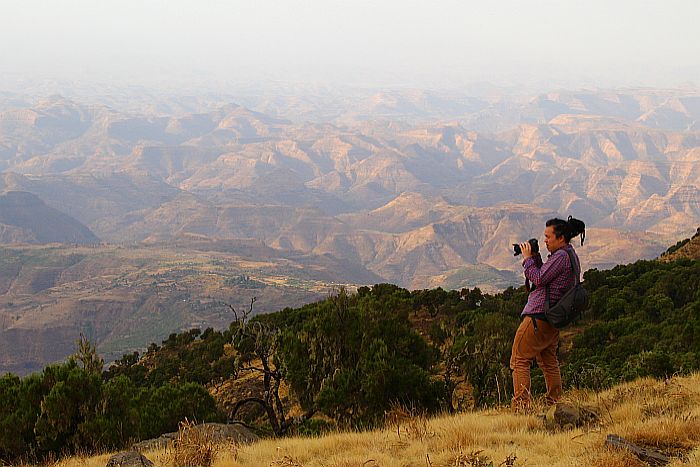Not only will you have about awe-inspiring views, the Simien mountains is also home to vast groups of endemic gelada primates as well as elusive leopard, hyena and the endemic Walia ibex.
Scroll for more
The Simien Mountain National Park lies an easy three hour drive north of Gondar. This park protects some of the most stunning mountain countryside in Africa. If you love mountains, then the jagged Simien range should definitely be on your bucket list. Their beauty is brought into particularly sharp relief by the vertiginous river gorges.
But the Simien Mountain National Park is not only about glorious countryside. It is also home to vast groups of the endemic gelada primates which are fascinating to watch. Other wildlife include the elusive leopard as well as hyena, ibex and Ethiopian wolf. Furthermore the jagged cliffs are perhaps the best place in the world to see the spectacular lammergeyer.
These mountains offer fantastic walking and hiking. Choose between easy short hikes along the edge of the plateau, to full day excursions, to multi-day trekking and camping trips to explore deeper into the park.
On even a short walk, you are guaranteed to see the gelada, usually in vast numbers. They are charmingly unfazed by your presence. So you can watch their elaborate grooming and mating rituals from close range – fantastic for keen photographers.

As I love mountain walking, I was in my element here. The Simien Mountains made for a great contrast with the culture and history experienced in much of the rest of the northern Ethiopian highlands and a chance to stretch your legs. The walking is not strenuous as you stay on the ridge of the plateau and enjoy plunging views down into the valleys far below...
